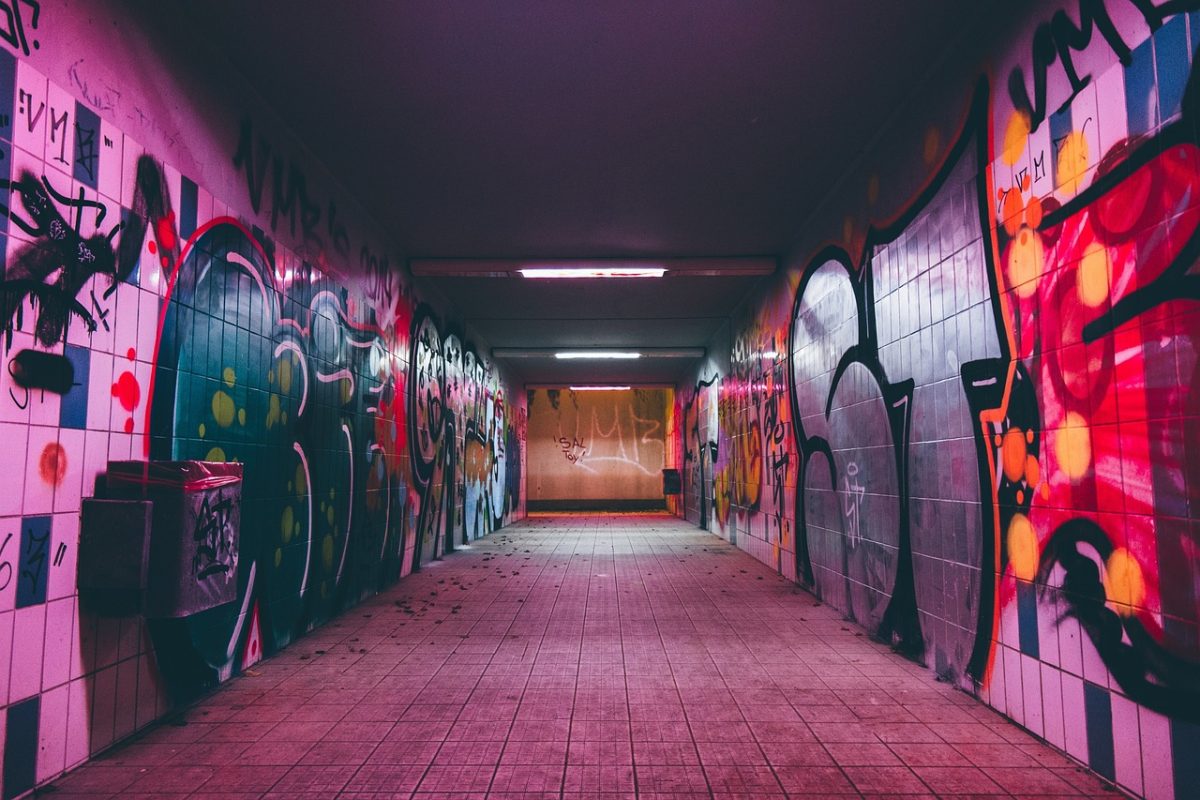Walk through Brooklyn, and you’ll see it everywhere—on brick walls, under bridges, and across metal shutters pulled down over bodegas at night. Color, movement, voices. Graffiti doesn’t ask for permission. It doesn’t wait for a gallery. It shows up unannounced, right in the middle of the city’s daily chaos, demanding to be noticed. And whether it’s a sprawling, intricate mural or a single tag scrawled in black marker on a subway pole, it all comes from the same place—the need to create, to leave something behind, to make a mark in a place that’s constantly moving.
A giant Biggie Smalls stares down at passersby in Bed-Stuy, frozen in time with a crown perched on his head, a reminder of the borough’s roots. Around the corner, a newer piece might pop up overnight—a surreal face, a spray-painted message, something that will last a week or a year depending on how the city moves around it. These big, bold works catch your eye, make you stop for a second, maybe even pull out your phone. But not all graffiti is meant to be admired like that. Some of it is quieter, hidden in the places people forget to look. Take the subway tunnels. Most people barely glance at the walls as the train rushes past, but if you do, you’ll catch glimpses of names, symbols, words layered over each other. Some of those names have been riding the tunnels for decades, untouched by time, passing unnoticed by the thousands of people who sit just inches away every single day.
A city like New York is built on structure—grids, schedules, rules. Graffiti interrupts that. It sneaks into the gaps, fills the blank spaces, refuses to let everything stay neat and orderly. A quick spray of bright blue on a dull concrete wall. A sticker slapped onto a street sign. A scribbled thought left on FDR’s bathroom door, waiting for the next person to add to it. It’s art, but it’s also rebellion. Not in the dramatic, law-breaking sense, but in the simple act of refusing to let a city become nothing but steel and stone.
Most of it won’t last. The city paints over it. The rain washes it away. A new tag covers the old one. But that’s the point, isn’t it? Graffiti isn’t about permanence. It’s about the moment—about saying, I was here, even if only for a little while. And maybe that’s why people keep doing it, why they always will. Because in a place where it’s so easy to feel small, sometimes all you need is a name scrawled in a hidden corner to remind you that you’re part of something bigger.

